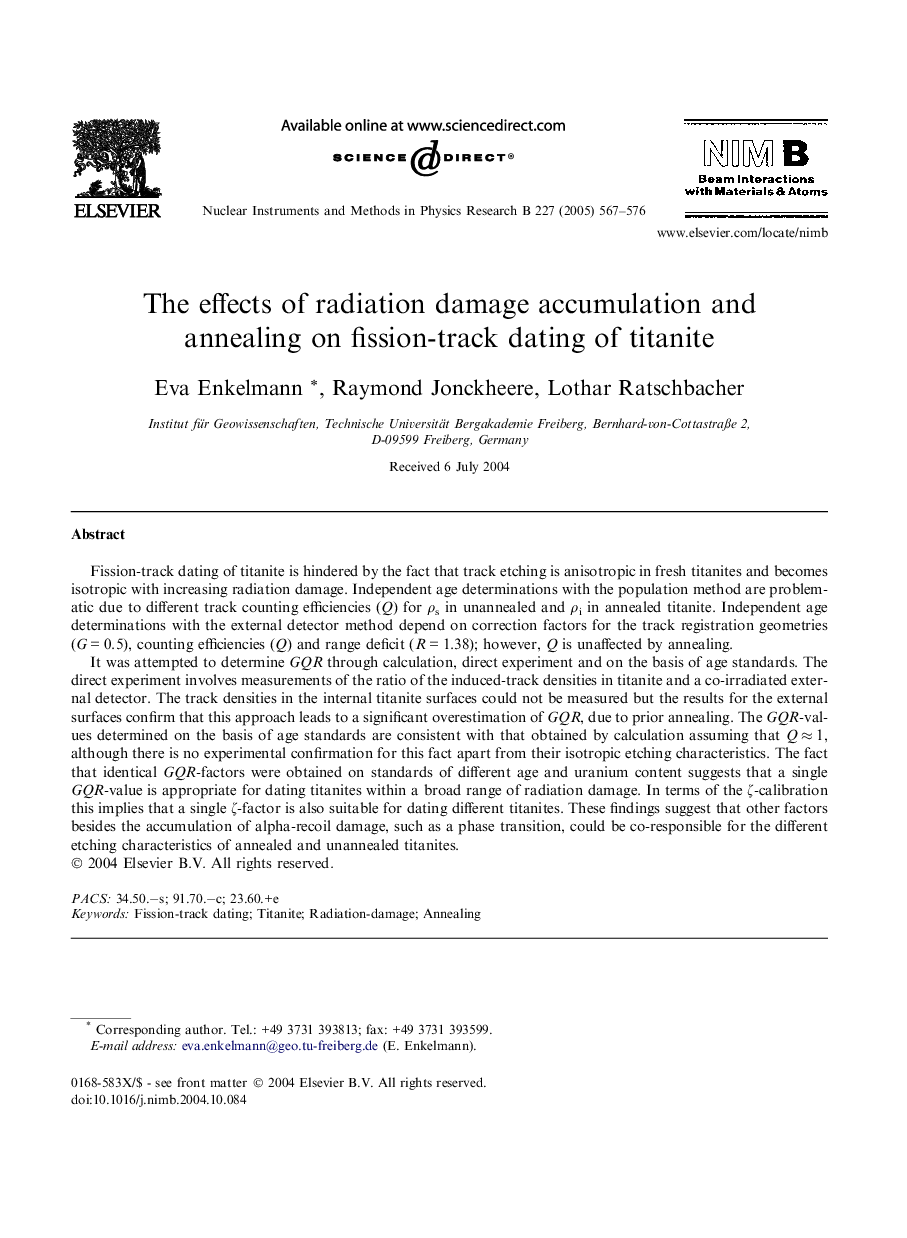| Article ID | Journal | Published Year | Pages | File Type |
|---|---|---|---|---|
| 10675439 | Nuclear Instruments and Methods in Physics Research Section B: Beam Interactions with Materials and Atoms | 2005 | 10 Pages |
Abstract
It was attempted to determine GQR through calculation, direct experiment and on the basis of age standards. The direct experiment involves measurements of the ratio of the induced-track densities in titanite and a co-irradiated external detector. The track densities in the internal titanite surfaces could not be measured but the results for the external surfaces confirm that this approach leads to a significant overestimation of GQR, due to prior annealing. The GQR-values determined on the basis of age standards are consistent with that obtained by calculation assuming that Q â 1, although there is no experimental confirmation for this fact apart from their isotropic etching characteristics. The fact that identical GQR-factors were obtained on standards of different age and uranium content suggests that a single GQR-value is appropriate for dating titanites within a broad range of radiation damage. In terms of the ζ-calibration this implies that a single ζ-factor is also suitable for dating different titanites. These findings suggest that other factors besides the accumulation of alpha-recoil damage, such as a phase transition, could be co-responsible for the different etching characteristics of annealed and unannealed titanites.
Related Topics
Physical Sciences and Engineering
Materials Science
Surfaces, Coatings and Films
Authors
Eva Enkelmann, Raymond Jonckheere, Lothar Ratschbacher,
